
The CEO as Entrepreneur | Reading Room BY CHARLES D. TANDY |
CHARLES D. TANDY
1918- 1978 The man who built Radio Shack was Charles Tandy, a wily Texan who always had a cigar in hand. Tandy's beginnings were inauspicious: In 1935 he flunked out of Rice University. He subsequently received a degree from Texas Christian University, and from there it was a year at the Harvard Business School and then the navy and World War II. Meanwhile his father was selling leather soles and other shoemaking supplies to shoe-repair shops, with little prospects for company growth. But young Tandy discovered that leathercraft projects were popular with the injured soldiers recuperating in hospitals, and wrote to his dad that he should expand into leathercraft supplies. When Tandy left the navy in 1947, father and son organized the Tandy Leather Company, a mail-order/ retail-store operation. Business boomed and by the mid-1950s Tandy was looking to enter new fields. He first learned of Radio Shack in 1961, but it would be another two years before he bought the small electronics retail chain. When he took over Radio Shack, there were only nine outlets, and the company's net worth was a negative $2.5 million. Fifteen years later the chain included 7,000 stores, with an amazing 594 locations opening in 1976. Needless to say, Tandy liked to move boldly and quickly. Two key factors to success were imposing strict financial inventory controls, and creating weekly reports that kept him on top of district managers and red-flagged any drop in sales. He'd berate them, "If you can't get your job done in five days, do it in seven." Tandy also believed that money was the best motivator of men, and he set up four different profit-sharing plans for store managers. Bonuses always outweighed salary; by 1976 a variety of profit-sharing plans had made more than fifty Radio Shack millionaires. To personally stay focused and undisturbed, Tandy kept an office away from the office, with no secretary. With all the success, Tandy still considered himself an entrepreneur, a key attitude to bring to the management of a company. In the following selection, he warns, "If the CEO is the only entrepreneur in the organization, his company is not likely to set any growth records." The CEO as Entrepreneur
Charles D. Tandy I should explain that I interpret entrepreneurship broadly. In my opinion, the term applies not only to those who organize and manage a company, taking the risk involved, but also to those who acquire ailing companies and reorganize them, taking the risk involved. Tandy Corporation has practiced entrepreneurship both ways—and several times—and has the scars to prove it. I know of no better way to tell you my ideas about entrepreneurism than to preface my comments with a brief recital of my company's life and hard times. THE ENTREPRENEURIAL SPIRIT YESTERDAY Tandy Leather Company, genesis of the present corporation, began in Fort Worth, Texas, on a shoestring back in 1918. My father, David L. Tandy—from whom I inherited my enthusiasm for selling and merchandising—formed a partnership with Norton Hinckley to sell sole leather and other shoe repair supplies to shoe repair dealers in Texas. The firm weathered the Depression's storms, gathered strength, and established a firm base in the shoe findings business during the next 25 years. My first contribution to the company came in the form of a letter to my father while I was on navy duty in Hawaii during World War II. I suggested to him that leathercraft might offer new possibilities for growth of the shoe findings business because leather was used in large quantities in army and navy hospital units and recreation centers. Leathercraft gave the men something useful to do; and their handiwork, in addition to being therapeutic, had genuine value. When I returned home from the service in 1947, I obtained permission to operate the small leathercraft division which my father had formed at my suggestion. One of my early moves was the opening of the first two retail stores specializing exclusively in leathercraft. These two stores opened in 1950 in El Paso and San Antonio. I felt that if these two stores could survive, with the help of direct-mail-order sales, my formula for a leathercraft chain-store operation might be successful. The venture made a 100 percent return on investment the first year. Our first catalog, only eight pages, was mailed in response to inquiries resulting from two-inch ads which we had placed in Popular Science magazine. Mail-order sales of leathercraft were a vital part of our formula. In spite of the success of the two pilot stores, Mr. Hinckley, my father's partner, was not enthusiastic about the new leathercraft division; so, in 1950, my father and I worked out an agreement whereby we pursued the leathercraft business and Mr. Hinckley took over the shoe findings business. From 1950 on, the successful formula of retail and mail-order stores supported by direct-mail advertising was expanded into today's chain of 236 leathercraft stores. The same basic formula has been applied to all of the specialty retailing divisions later operated by the corporation. The do-it-yourself movement prompted by consumer goods shortages and high labor costs was gaining momentum in the early 1950s. The 15 leathercraft stores opened during the first two years were successful, and our management was gaining confidence. When a handicrafts company in East Orange, N. J., became available after it had suffered a series of financial setbacks, I seized the opportunity to buy it. American Handicrafts Company became Tandy Leather Company's first acquisition. This acquisition brought a broad line of do-it-yourself handicraft products, two established retail stores in the New York area, and useful knowledge of school and institutional markets. We began promptly to make this sick company well and to move it forward. In 1953 we opened 16 additional retail stores, all following the basic formula of the first pilot stores. Believing then and now that good people are as vital to an organization as good merchandise, and believing further that without proper incentives neither the people nor the company will grow, we made all of the managers of the first stores partners in the organization and cut them in on the capital investment and the profits. All of the employees in the company from file clerks up were invited to buy into the new companies as they were formed and to share in the profits. The five-year period between 1950 and 1955 was an exciting period of growth and optimism for the Tandy organization. Sales reached $8,000,000 and earnings were $523,000—all generated from leased premises in 75 cities in the United States. Good people are as vital to an organization as good merchandise . . . we made all of the managers of the first stores partners in the organization and cut them in on the capital investment and the profits.To cope with the estate and management problems created by a successful closely-held company—then owned by over 100 stockholder-managers—we chose to sell the company rather than go to a public underwriting. In 1955, therefore, we sold the company to the American Hide and Leather Company of Boston, which was listed on the New York Stock Exchange. It had been in the tannery business for some 54 years but had fallen into serious financial difficulty, its annual sales having dropped from $17 million to $9 million in recent years. Terms of the sale provided options for the stockholders of our Tandy Leather Company to buy 46 percent of the shares of American Hide and Leather Company stock at $4 per share over a four-year period. Earnings of the Tandy organization, applied to the deficit of our new parent company, erased the losses and provided new cash flow for an aggressive diversification program which its management felt was vital to growth. Disposing of the tanneries and changing the name to General American Industries to dramatize the new management concept, the company in 1956 embarked on a diversification program by acquiring three companies wholly unrelated to the leather-craft business and the assets of Tex Tan of Yoakum, Texas, engaged in manufacture and sale of finished "western" goods such as saddles, belts, billfolds, and purses. This Tex Tan acquisition, it later developed, was the wisest decision made in 1956. The high hopes and excitement brought about by the merger of our Tandy Leather Company changed to frustration and despair between 1955 and 1958. It became apparent that of the five divisions in General American Industries only two—Tandy and Tex Tan—were profitable. This presented me with the toughest challenge I had faced to date. It made me furious to see the hard-earned profits of the Tandy and Tex Tan groups used to plug the losses of the other divisions instead of being applied to growth and expansion as originally planned. Management of the other groups would not, or could not, pursue the profit-oriented practices of the Tandy and Tex Tan groups. Thus began a struggle for control of the parent company. I used all of my resources to raise money to purchase the 500,000 shares of stock that were included in the original merger agreement. All of the key personnel in the Tandy and Tex Tan groups lent their support. A nip-and-tuck proxy fight was imminent. Only weeks before the annual stockholders' meeting that would decide the fate of the enterprise, I learned of the existence of a stockholder in a foreign country who controlled a very large block of stock and was not clearly committed to the incumbent management or to our group. Both factions sent emissaries to Europe to lay the facts on the table before this key stockholder. The day of the stockholders' meeting was one of enormous strain and anxiety. Proxies were counted. The owner of the critical block of stock, in a perfect display of neutrality, had abstained from voting. Our Tandy group obtained management control of General American Industries. In 1960, we sold the last of the unprofitable divisions. This was the first and only year in which our organization showed a loss ($ 267,000) and a drop in sales, both resulting from the costly divestitures. During the "clean-up" year of 1960, our company emerged with the management team, marketing direction, and operating objectives that exist today. In 1961, the company name was changed to Tandy Corporation; the corporate headquarters were moved to Fort Worth; I became president and chairman of the board; and our company name was listed on the New York Stock Exchange. We concentrated our efforts on expanding the Tex Tan Division, which manufactured and sold saddlery, riding equipment, and other finished leather goods, and the Tandy Leather Division. We acquired Craftool Company, manufacturer of precision leather tools, and Clarke and Clarke, Limited, a leathercraft firm in Barrie, Ontario. By 1961, we were operating 125 stores in 105 cities of the United States and Canada. We were on our way again. In that year, we acquired several new companies to complement our line of products, including a manufacturer of leather sport and western clothing, and a manufacturer and retailer of needlecraft items. It was now possible to use the resources of one division to develop new products for another. In 1962, the Tandy organization advanced money to Cost Plus, a West Coast importer of decorator furnishings, gourmet foods, and unusual housewares from all over the world. The firm needed capital for expansion. We received distribution rights for the remainder of the United States and the use of the name. Because the chain-store route had already been proved several times by Tandy Corporation as a rapid and profitable means of expansion, we established our first import store outside of California in Fort Worth, and during the following months we opened additional stores. The type of marketing used by Cost Plus—later named Pier 1 Imports—was fruitful and productive, but it required considerable continuing capital investment. By 1964, another one of our new acquisitions, Radio Shack, was beginning its vigorous expansion. The management of Tandy Corporation determined that this new acquisition offered a greater opportunity for early return on our limited capital, so we sold the Pier 1 operation to that division's executive group. Pier 1 continues to be successful today. Our policy at Tandy has always been growth through reinvestment of profits. If an idea can't be proved effective within a reasonable period, we move on to something else. THE ENTREPRENEURIAL SPIRIT TODAY In 1962, I became intrigued with the potential for rapid growth in the retail electronics industry. Tandy Corporation acquired Electronic Crafts in Fort Worth as a pilot operation. The initial success of this pilot operation prompted me to seek a company in the electronics field that had the needed resources and talents for successful expansion. In 1963, I found Radio Shack in Boston, a mail-order company that had started in the 1920s by selling to ham operators and electronic buffs. Radio Shack, with nine retail stores, was in very poor operating and financial condition. It had lost $4,500,000 the year before. It owed more than $6,000,000 to a Boston bank and $2,000,000 to an insurance company. It had a net worth of minus $2,500,000. If an idea can't be proved effective within a reasonable period, we move on to something else.This acquisition, more than any other in our corporate history, required me, as Chief Executive Officer, to carry out my entrepreneurial risk-taking role to the hilt—unless I've mixed a metaphor there somewhere. When I presented the proposed acquisition to my board of directors, they were unanimously opposed to the idea. Some of them apparently thought that I had cracked up. "Why in the world should you take on this kind of problem?" they asked. "Nobody has ever been able to make one of these electronic firms profitable enough to amount to anything." I replied, "I believe that I can turn the situation around." "But we don't want you to do it," they said firmly. Here was an entrepreneur's moment of truth. I couldn't understand why all of my directors couldn't see the potential in Radio Shack that I could see. I was one director out of nine, so I couldn't outvote them. Literally with tears in my eyes, and with some emotion, I told them that I was deadly serious about acquiring Radio Shack. I pointed out that many of the inside directors had been doing what they wanted to be doing, with one of them handling the accounting, another handling this or that. "Now, I am going to do what I want to do. If I don't get an affirmative vote on this proposed acquisition, then I will sell every share of stock that I own in our corporation and will personally acquire Radio Shack on my own hook." I wasn't trying to run a bluff. I felt that strongly about what I could see in Radio Shack and what I could do with it. I was willing to gamble that it was something I could make into a viable, strong, and prosperous company. When the directors realized that I was really this determined about acquiring Radio Shack, they changed their minds and voted unanimously for the acquisition. In fiscal 1975—12 years after the acquisition—our Radio Shack Division operated 2,651 stores, did 68 percent of our corporation's $724,488,293 worth of business, and made 81 percent of total divisional income. In those 12 years since 1963, we had made a number of major changes in the Radio Shack operation and had applied some of the merchandising techniques pioneered with Tandy Leather. Almost immediately, we reduced inventories through an aggressive direct-mail campaign to existing customers, concentrating our selling efforts on items with fast turnover and broad consumer appeal. We reduced the number of stock items from 40,000 to 2,500; at the same time, we tripled the turnover. We began requiring a 25 percent down payment and later cut out credit altogether. We insisted that buyers and merchandise men work constantly to develop new ideas for exclusive products and then buy properly so that our products would be competitive. When manufacturers in the United States were inadequate for this purpose, we developed resources abroad. We expanded retail stores rapidly. Two years after we had assumed leadership, Radio Shack was profitable and was in sound financial condition with sales approaching $20 million. We decided to open Radio Shacks in Canada five years ago. We made profits there the second year. In 1973, we began European operations using the name Tandy International Electronics. By the end of fiscal 1975 we had more than 220 stores in Europe. We also launched Radio Shack in Australia in 1973, and had 67 stores operating there by the end of fiscal 1975. Last year, we opened a Radio Shack either in this country or abroad at the rate of one per day, and we expect to continue this pace in the year ahead. In fact, in fiscal 1975, if you include our authorized sales centers—proprietor-owned stores in cities under 20,000 population—openings of Radio Shacks were at the rate of more than two per day. We're going to put Radio Shack around the globe. We're going to have somebody selling our products down the Nile, down the Amazon, or wherever. We're not there yet, but that is our plan.I don't believe in hanging on to operations which we can't run effectively. As many Chief Executive Officers and all football coaches have learned, many of them the hard way, you can't win 'em all. I think that we can do this with Radio Shack because we already manufacture more than 30 percent of our merchandise, and this percentage is steadily increasing. We intend to duplicate what we achieved with Tandy Leather—that is, to manufacture practically everything that we sell. Our motives in expanding our manufacturing activities, aside from profits, are (1) to gain the skills in design and technology required to keep us in a position of leadership; (2) to achieve product exclusivity; and (3) to reduce dependence on external suppliers. Although Radio Shack is the fastest horse in the Tandy corporate stable, we have a score of other horses that are running quite well—plus a couple which have come up lame in the back stretch. As the emphasis of our operations became more and more retail, rather than mail-order, we began looking for an established retail organization to merge with our expanding system. This turned out to be a full-line department store and a chain of six junior department stores in Fort Worth. We expanded the former into 3 suburban shopping centers around Forth Worth and the latter to 74 retail outlets in North Texas and Oklahoma. When we couldn't make the operation profitable after five years of expansion effort, we sold it and took our losses. I don't believe in hanging on to operations which we can't run effectively. As many Chief Executive Officers and all football coaches have learned, many of them the hard way, you can't win 'em all. In the late 1960s and early 1970s, we acquired no fewer than 22 companies. Many of these companies are in businesses related to one or more of our established divisions and, where feasible, we have integrated them. We have expanded some of them into chains; have merged some of them with other divisions; and have liquidated some of them. Our latest move is a plan to separate Tandy Corporation into three publicly held companies in order to provide more intensive and distinct management leadership of the three basic and diverse businesses in which we are engaged—consumer electronics, handicrafts, and leather products. Under the plan, now awaiting the necessary approvals by regulatory agencies, Tandy Corporation will carry on the consumer electronics (Radio Shack) operations as its sole business. The plan calls for the issuance to shareholders, in the form of a tax-free dividend, of the common stock of two new companies to be drawn from the handicrafts operations and from the leather products operations of the present corporation. It will provide shareholders in the future with three clearly defined investment vehicles, each with a simplified corporate structure and business direction. SOME OBSERVATIONS AND SUGGESTIONS The most important element in our success is probably our people. Our executive and management people, for the most part, have been developed and promoted from within our organization. We have a motivation and career progress program which attracts and holds a particular type of individual—the type who delivers and expects to be paid for it. The program is simply this: Each profit center manager and executive is compensated with a nominal salary and a bonus formula which can yield him a generous portion of the annual profits of his unit. Nearly one out of every five of our 20,000 employees receives an annual bonus. We keep our tables of organization simple, or forget about them altogether. In my opinion, many large corporations pay too much homage to organization charts and rely on them too much. This program has enabled us to build a management organization of seasoned, profit-oriented people who respond to the challenge of individual progress in their personal incomes and in their careers. We have never needed employment contracts or stock option programs or retirement plans with our kind of people. We do encourage ownership of company stock through our contributory Tandy Employees Investment Plan; and today, our employees own more than 20 percent of the outstanding stock of the company and will probably own an even higher percentage in the years ahead. We run our divisions and subsidiaries with a light corporate touch, giving the presidents and managers both authority and responsibility, pegging their bonuses to their performance. This practice identifies and encourages entrepreneurship, which is basic to our American free-enterprise system. Our corporate president earned the post primarily by bringing the three Tandy companies for which he was responsible from a $250,000 loss on sales of $12.6 million in fiscal 1970 to a $4 million profit on sales of about $50 million in fiscal 1974. We keep our tables of organization simple, or forget about them altogether. In my opinion, many large corporations pay too much homage to organization charts and rely on them too much. A corporation with an informal and flexible organizational setup is better able to take advantage of opportunities that come along, and can take prompt action when problems arise. Running a corporation in today's economic climate, buffeted simultaneously by inflation and recession—and keeping the corporation profitable and growing—is a full-time job for a CEO. At the same time, all CEOs are being called upon to shoulder a large part of the growing responsibilities of corporations with respect to employees, shareholders, consumers, environmentalists, minorities, bankers, investors, the press, the community, Congress, endless government agencies, and even foreign governments. I let my associates handle quite a bit of this. Granted, some external matters you have to do yourself, simply because you're the top guy. But I never forget that the corporate woods are full of companies in trouble because the CEO was not minding the store. It goes without saying—but I'll say it anyway—a successful entrepreneur must have the courage of his convictions. I like the title and much of the content of a recent book on entrepreneurship by Joseph Mancuso. He titled the book Fun and Guts*—which may be overdoing things a bit—but he wanted to make the point that an entrepreneur's philosophy should be a cross between "fun and games" and "blood and guts." Mancuso claims that entrepreneurs are born, not made, and that you can spot them across a room. They will be the persons "talking about doubling sales and earnings, or attracting new capital, or a five-year growth program." They "would rather discuss raising capital than girls, rather talk of a new product, service, or marketing technique than eat." He cites energy as the one coefficient of entrepreneurial success. "You may have all of the ambition in the world, gobs of capital, a gambling man's soul, and business degrees covering the entire wall, but if you aren't virtually a human dynamo, forget it." In my opinion, shared by Mancuso, entrepreneurs are individualistic and optimistic, and they prefer the 3-to-1 shot to the odds-on favorite or the horse listed at 20 to 1. It goes without saying—but I'll say it anyway—a successful entrepreneur must have the courage of his convictions. Some CEOs own all or a large piece of their companies. They risk their own money, and they are a very special brand of entrepreneur. We need more of them. But some of our most important CEO entrepreneurs today are cast in the role of "professional manager." They may own a share of the company, and that share may even be significant for them in a personal financial sense; but the ownership share of these CEOs is insignificant in relation to the total ownership, which often is in public or institutional hands. These men are important in light of the vast portion of industrial enterprise which they shape. They, too, must have the courage of their convictions. Unfortunately, the list of these CEO-entrepreneurs is too short. CONCLUSION And, now, for some closing thoughts. Aside from the CEO, who needs the entrepreneurial spirit? We feel that in our company, line management must be made up of entrepreneurs. Even staff managers should possess a high degree of entrepreneurship to bring creativity to their assignments and to work effectively with line management. Can the CEO cultivate entrepreneurship in an organization? Or does entrepreneurship necessarily depend on one man? "Yes" to the first question; "no" to the second. The best way to cultivate entrepreneurship is to preach, practice, appreciate, and reward it when it is demonstrated. If the CEO is the only entrepreneur in the organization, his company is not likely to set any growth records. Where does the board of directors fit into the entrepreneurial picture? Right in the middle. There is hardly any way that a CEO can exercise much entrepreneurism unless his directors—at least a majority of them—give him the authority and the necessary support. Ideally, most of them will be entrepreneurs themselves. Aside from the CEO, who needs the entrepreneurial spirit? We feel that in our company, line management must be made up of entrepreneurs. I would like to express one last thought and one hope. The thought is rather old-fashioned, but I remember that when our forefathers settled this country, nobody took them by the hand. If they had a good crop, it was theirs; if they had a bad one, it was tough. That is exactly how we try to run our company and treat our people, which is a lot different from the way most large companies are run. My hope is that the good which the Tandy team has accomplished with its entrepreneurial efforts will be an encouraging and enlightening example to others, particularly those outside the field of business activity, whose understanding of the free-enterprise system needs to be encouraged and enlightened. Source: The Book of Management Wisdom: Classic Writings by Legendary Managers, PART I: Essential Qualities of Great Managers. ©2000 Peter Krass (Editor) . All Rights Reserved. Used by permission. |
|
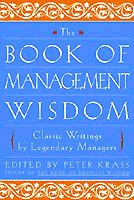 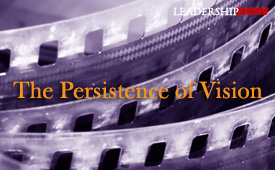
The Persistence of Vision MICHAEL MCKINNEY 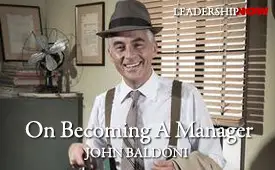
On Becoming A Manager JOHN BALDONI 
Communicating with Power: Putting Leadership on Parade KEVIN DALEY 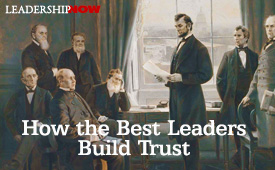
How the Best Leaders Build Trust STEPHEN M. R. COVEY 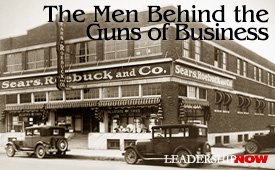
The Men Behind the Guns of Business RICHARD W. SEARS 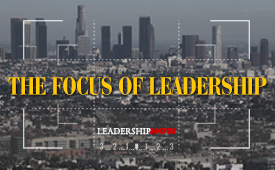
The Focus of Leadership MICHAEL MCKINNEY 
Why Leaders Fail MARK SANBORN |
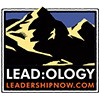 |
| ||
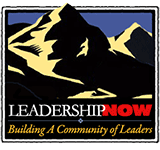 | © 2019 LeadershipNow All materials contained in https://www.LeadershipNow.com are protected by copyright and trademark laws and may not be used for any purpose whatsoever other than private, non-commercial viewing purposes. Derivative works and other unauthorized copying or use of stills, video footage, text or graphics is expressly prohibited. |
||